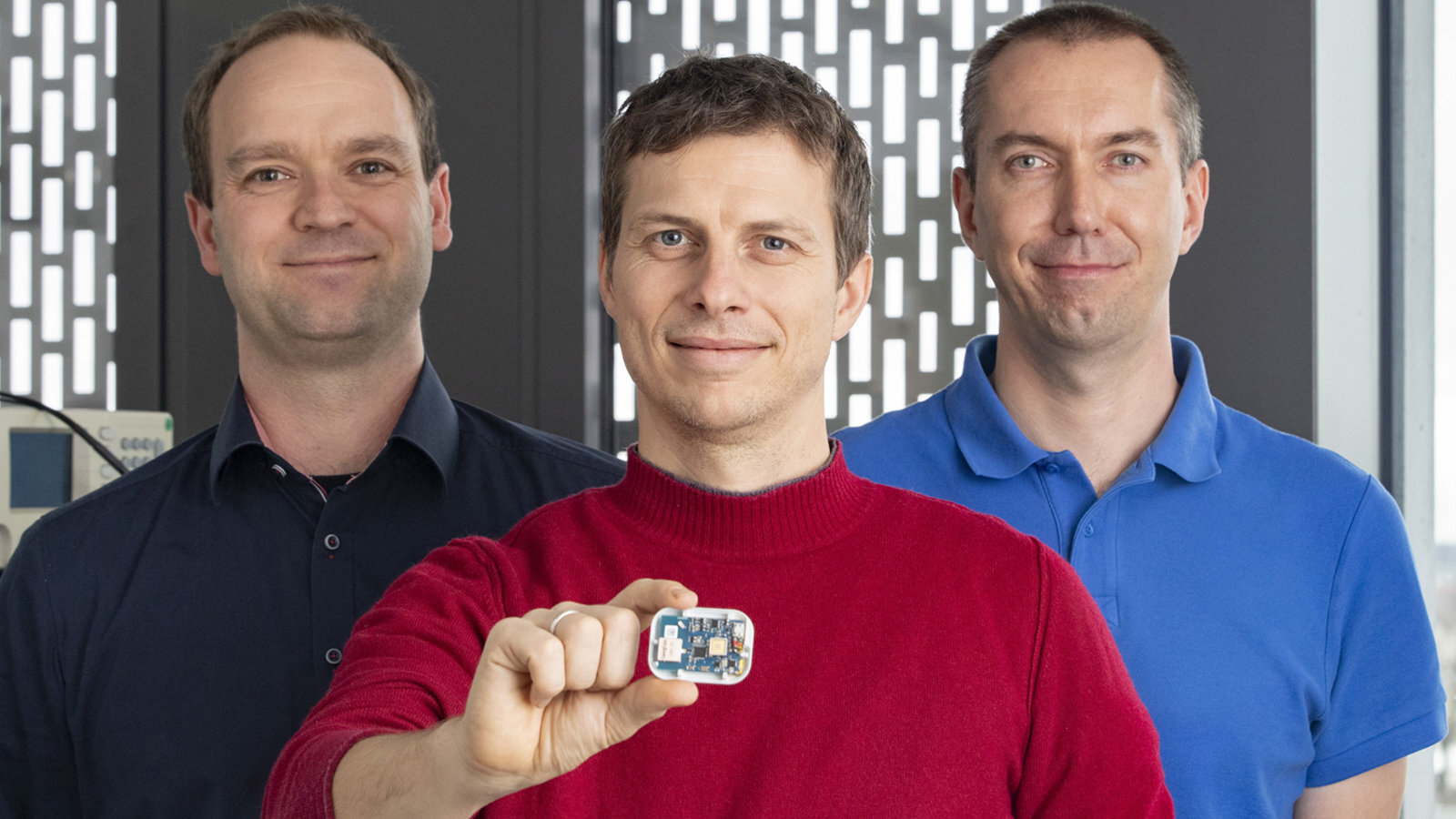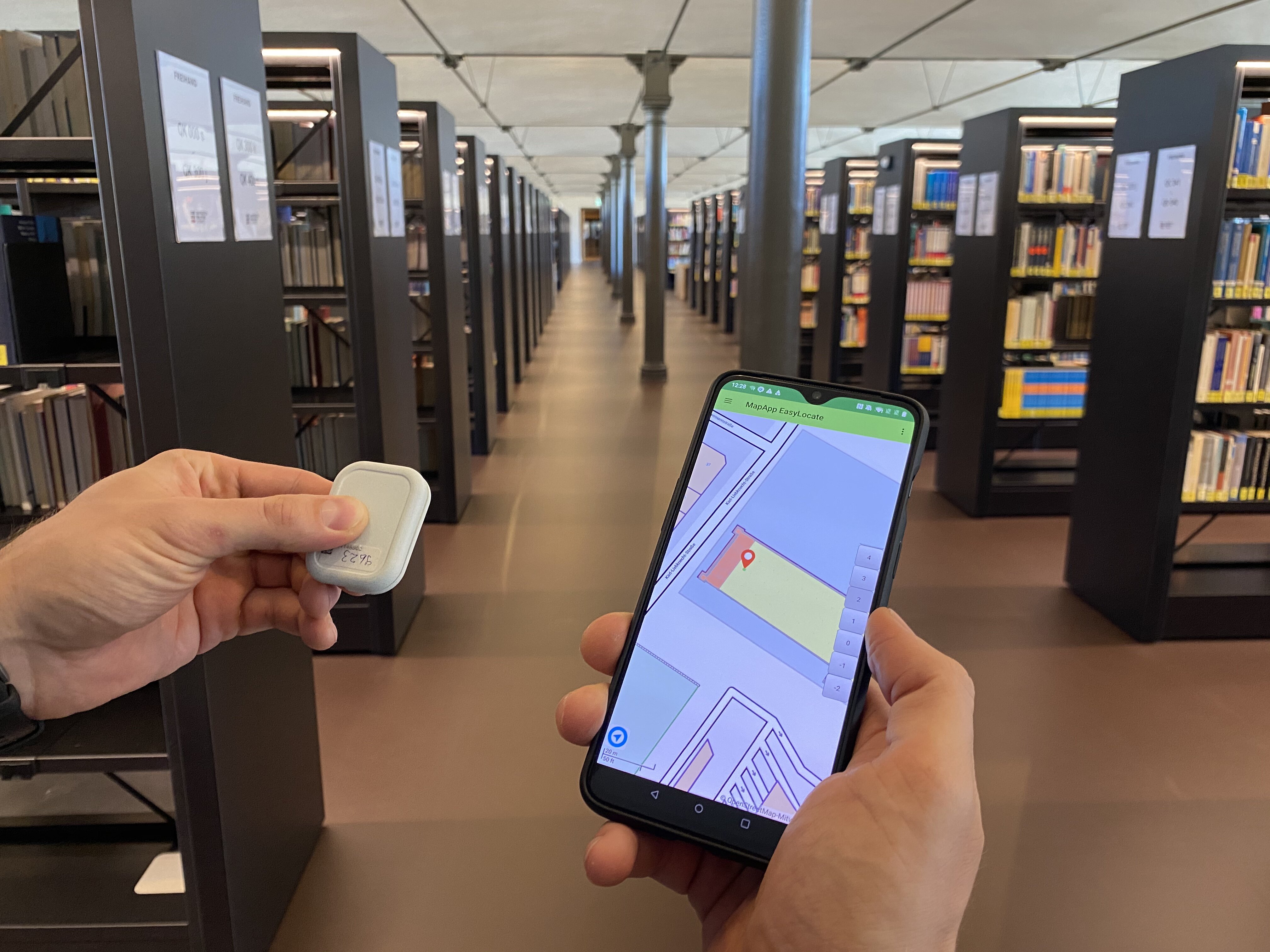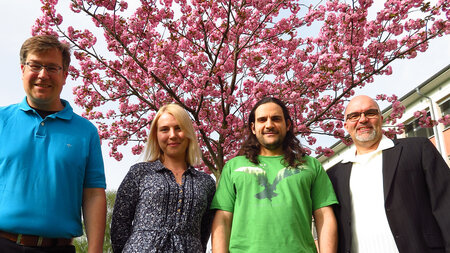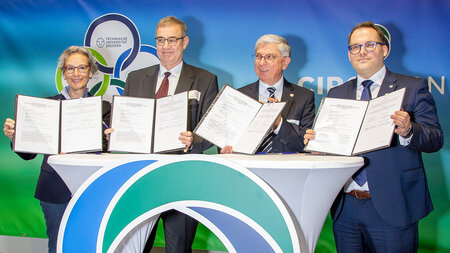UWB Infrastructure for Smartphone Navigation Indoors Developed
Researchers at Chemnitz University of Technology develop Ultra-wideband technology for precise indoor navigation even in complex buildings to market maturity
-

Seamless navigation between outside and inside is what university researchers Daniel Froß (left), Marcel Putsche (right), and Dr. Marko Rößler want to achieve. Photo: Image archive of the press and crossmedia editorial office -

ghly efficient localization chip combines low energy consumption with very high localization accuracy. Photo: private
The technology for navigation outside buildings is widely established and available. Until now, however, it has been a major technical hurdle to seamlessly continue navigation from outside inside buildings. That's because while we are guided from Point A to Point B by GPS satellites outside. GPS-like positioning technology doesn't exist inside buildings - until now.
A team of researchers at the Professorship of Circuit and System Design at Chemnitz University of Technology has cleared the last technological hurdle for an indoor navigation system: "We're bringing navigational satellites into buildings," says Marko Rößler. He is a research associate at this professorship and, together with his colleagues, has developed the mini-satellites called "SatLets" for indoor navigation. The aim is to achieve a seamless transition from outdoor to indoor navigation: "We call the navigation we have developed 'Seamless Travel.' This means we are transferring the principle of global positioning systems into buildings," says Rößler.
Highly synchronized timing between all components
For seamless navigation to succeed, three things are needed in general: an energy-saving microchip for mobile devices and an algorithm that processes the position signals and thus enables ultra-precise localization in buildings. Added to this are UWB-satellites that transmit the position signals. Rößler and his team developed both the chip and the algorithm as part of the joint project "FIND-IT - Competence Platform Indoor Positioning and Logistics" funded by the German Federal Ministry of Education and Research. The "SatLets" building satellites complete the setup and enable the detection of people and objects in the room. What was still missing was a common understanding of time between all components.
"For the interaction between chip, algorithm, and satellites in the building, we had to establish a highly synchronous time understanding between the UWB-based SatLets in the nanosecond range," says Rößler. This is necessary, he says, because positioning in the building is done by measuring radio waves that travel at the speed of light. In GPS this is done using atomic clocks, but in the university team's SatLets, "we solved this using a specially created algorithm." Without this exact data, real-time navigation would not work. Currently, preparations are underway to file a patent application for the algorithm.
"With our technology, it is now possible to bring GPS-style navigation into the building. This will enable innovative applications that will enrich the everyday lives of many people," Rößler is certain. For example, after booking a train journey, navigation from home to the right track and from there to the reserved seat on the train. Library users, for example, can also be guided to the shelf where the desired book is located - even across several floors. Many other applications are conceivable, such as finding products in supermarkets or specialty stores.
Virtually unlimited scalability - privacy protection by listen-only
They are all also united by another special feature of the project. "What is special about our approach is that, it can be used by an almost unlimited number of users and that privacy is protected by determining the position on the user's device," Rößler makes clear. The Chemnitz research team also wants to integrate service and security functions. For example, an emergency call could be made with the exact position even inside a building, one's own position could be shared with friends and family, or food and drink deliveries could be guided to the apartment door inside the building or the seat in sport arenas.
It is a technology that holds similar innovation potential as outdoor navigation. Currently, smartphone manufacturers are already integrating UWB technology into their premium devices. Following a positive review in September 2020, the team received a funding recommendation from a panel of experts in December 2020 under the EXIST program of the German Federal Ministry for Economic Affairs and Energy to prepare for market entry and enable UWB based positioning systems to become mainstream.
The team was accompanied by the start-up network SAXEED, which supports and trains founders in the business formation process.
For additional information, please contact Dr.-Ing. Marko Rößler, Professorship of Circuit and System Design at Chemnitz University of Technology, tel. +49 371 531-33590, e-mail marko.roessler@etit.tu-chemnitz.de.
(Author: Matthias Fejes / Translation: Chelsea Burris)
Matthias Fejes
28.01.2021





